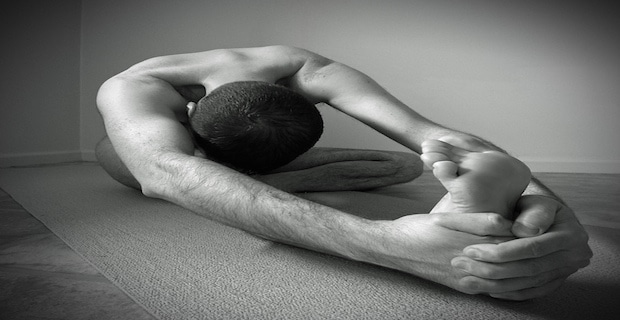
We spend one-third of our lives asleep, so you’d think we’d be pretty good at it, yet as many 50 percent of adults experience insomnia during their lives. Insomnia has many possible causes; however, half of those who experience insomnia blame it on stress. Ironically, insomnia also exacerbates stress. Thus, reducing stress would appear to be a logical step in helping prevent, treat and cope with insomnia (in addition to ruling out underlying medical issues such as sleep apnea).
Unfortunately, we can’t eliminate all sources of stress. But we can employ techniques for coping. It has been widely reported that yoga is one such technique. On the other hand, what is meant for this purpose by “yoga” remains unsettled, at least from a scientific standpoint. But some yoga poses have been hailed for their ability to reduce stress and induce sleep:
1. “Coffee” Needs “Milk”
Some students find backbending to have a caffeine-like effect – the deeper the backbend, the more excited or irritable they feel. Those same students tend to feel that forward bending soothes – kind of like warm milk. Just as one need not give up their morning coffee in order to get a good night’s sleep, one need not shun backbending in order to cope with insomnia. Rather, it’s a matter of “chasing” the “coffee” with the “milk” – following backbends with forward bends.
2. Espresso by Day, Decaf by Night
It is also a matter of not expecting to fall asleep immediately after chugging a latte. To avoid insomnia, you don’t need to swear off espresso, although as the day goes on, you’re better off sticking with decaf. Similarly, in order to enjoy the sleep-habit-supporting benefits of yoga, you need not stick to the more “relaxing”. But you need to watch the clock.
More vigorous forms of yoga generally do not interfere with sleep, but through their burning off of excess energy, may make it even easier to fall asleep – so long as practice isn’t happening within the two to three hour period before bedtime. But if you your schedule doesn’t permit you to fit in a yoga practice before dinner, it’s not too late – provided you stick with “yoga decaf”. This could mean a class labeled “gentle” or “restorative” or a home practice consisting primarily of seated forward bending poses. These could include “Paschimottana”, “Wide Angle” and “Bound Angle”. More experienced students can include “Forward Bending Pigeon” and “Ankle To Knee Pose”.
Standing poses can be included before the seated poses, provided that the standing poses feel stable and grounded – for example, Warrior 1 and Warrior 2. Tree and Eagle are appropriate for more experienced students.
And yoga practice should always close with a nice long Savasana – in bed if the time is right.
Image: Nicholas T.




